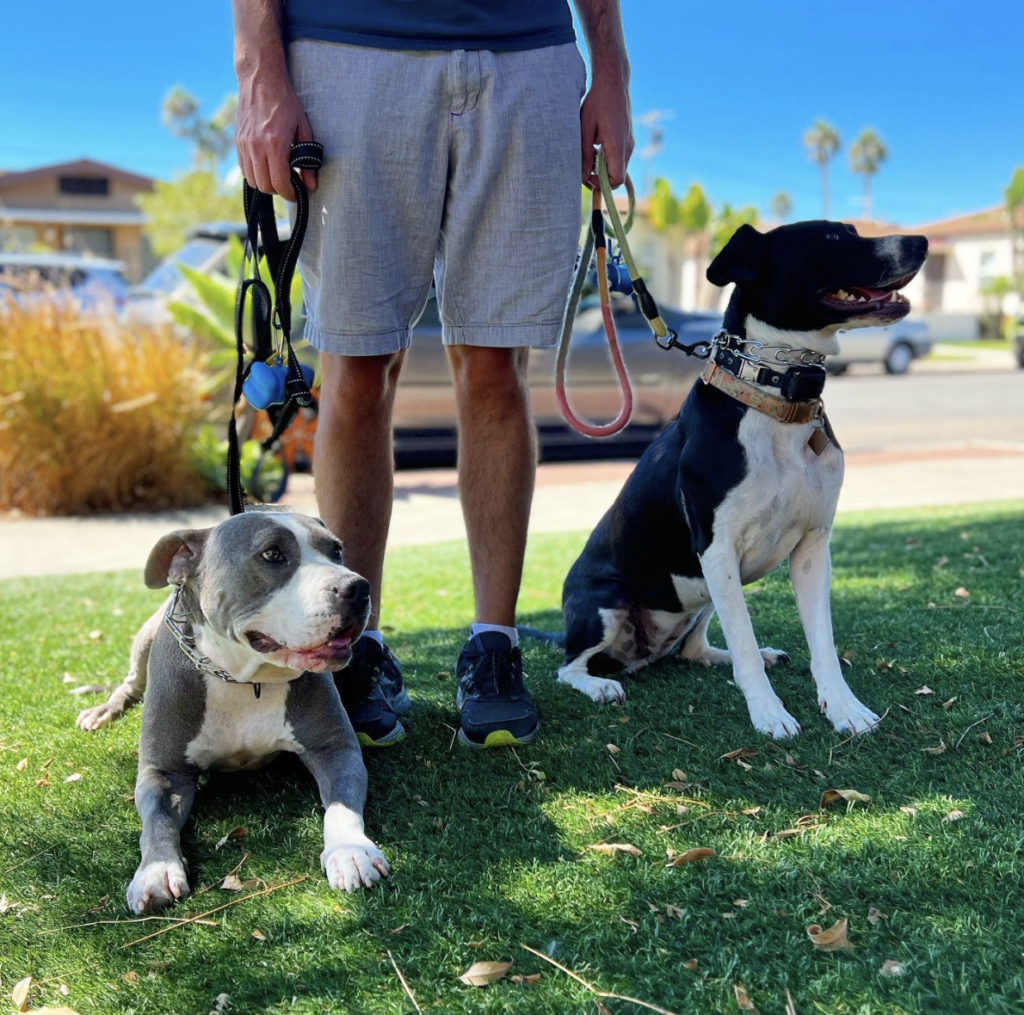11 Types of Dog Training (Learn them all)
Every dog owner cherishes the rewarding and enduring bond they share with their canine companion. An integral part of nurturing this relationship hinges on effective dog training. This guide aims to empower you, the dog owner, with the tools and understanding necessary to foster a well-behaved, obedient, and happy dog.

Understanding Dog Behavior
Before embarking on your dog training journey, it’s pivotal to understand the foundational instincts and behaviors of dogs. Dogs are pack animals by nature, deriving their social structure from their ancestors, wolves. They are innately wired to follow a leader, look for guidance, and work for their pack. Recognizing these inherent traits can significantly aid in the training process.
Moreover, dogs learn primarily through the principles of reinforcement, punishment, and extinction. The knowledge of these behavioral principles is key to successful dog training, enabling you to reward desirable behaviors effectively and discourage the undesirable ones.
Dog Training Basics
Initiating training as early as possible is advantageous, with puppies generally being receptive to training from as young as eight weeks old. However, older dogs can also learn new tricks, illustrating that it’s never too late to start training.
Consistency plays an irreplaceable role in dog training. Dogs learn from repetition and consistency in commands, rewards, and consequences. Hence, ensure to use the same commands and signals for specific behaviors.
Positive reinforcement is another indispensable tool. It involves immediately praising or giving a small treat when your dog performs a desired action. This method reinforces the good behavior, making your dog more likely to repeat it.
Patience is perhaps the most crucial ingredient in dog training. Dogs may take time to understand and follow commands. Hence, patience and persistence are key to seeing noticeable improvements in your dog’s behavior.
Clicker Training
Clicker training is a popular dog training method based on the principles of operant conditioning. It involves using a small handheld device that produces a distinct ‘click’ sound. This sound is used to communicate to your dog that they have performed the correct action.
When employing a clicker for training, it’s vital to create an association in your dog’s mind between the sound of the click and a positive reward. However, clicker training requires precise timing and consistency to be effective. It also may not be as effective with hearing-impaired dogs.

Positive Reinforcement Training
Positive reinforcement training is a method that focuses on rewarding desirable behavior. The process involves giving your dog a reward, often a treat, when they exhibit a desired behavior. This reward reinforces the behavior, making it more likely for the dog to repeat it.
While the method is generally successful, its limitation is that it doesn’t teach the dog about the consequences of undesirable behavior. Additionally, the dog may become overly reliant on treats and not obey commands without them.
Balanced Dog Training
Balanced dog training is a comprehensive approach that combines elements of positive reinforcement and correction. This method maintains a balanced approach towards rewards and discipline, aiming to build a respectful and trustful relationship between the dog and the owner.
By incorporating correction, dogs learn that there are consequences for unacceptable behavior, while the positive reinforcement encourages good behavior. The effectiveness of balanced dog training, however, heavily relies on the owner’s ability to use corrections appropriately without instilling fear or aggression in the dog.

Relationship-Based Training
Relationship-based training emphasizes a mutual understanding and bond between a dog and its owner. This approach focuses on meeting the dog’s needs, understanding their body language, and using effective communication to foster mutual trust and respect.
Building a strong relationship with your dog can result in a deeper connection and more effective training. However, this method may take more time than others as it prioritizes the relationship over immediate obedience.
Electronic Training
Electronic training, also known as E-collar training, involves the use of electronic collars that deliver a small electric shock to deter unwanted behavior. It can be effective when dealing with significant behavioral problems where other methods have failed.
However, this method requires a skilled handler to prevent misuse, which could potentially lead to fear or anxiety in dogs. It should be considered as a last resort and is best conducted under professional supervision.
Mirror Training
Mirror training banks on the idea that dogs learn by observation. As a dog owner, your behavior serves as a model that your dog mimics. By demonstrating the correct behavior yourself, your dog learns to imitate it.
Mirror training can be very effective, but it requires the owner to understand and enact the desired behavior accurately. It might not work as well for complex behaviors that cannot be easily demonstrated by humans.
Alpha Dog/ Dominance-Based Training
Dominance-based training, also known as alpha dog training, is based on the idea of the owner asserting themselves as the pack leader or ‘alpha’. This approach often involves techniques that intimidate the dog into submission.
However, this method has been criticized for potentially encouraging fear and aggression in dogs. It also might not work well with dogs that have a naturally dominant temperament.
Science-Based Dog Training
Science-based dog training involves techniques derived from scientific research on animal behavior. It often focuses on the dog’s psychological needs and uses evidence-based strategies for training.
This method’s advantage is its reliance on proven techniques, making it generally effective. However, the complexity of some strategies may require professional guidance for effective implementation.

Model-Rival or Mirror Training
Model-rival training is a method where a ‘model’, usually a person, is used to demonstrate good behavior. The dog sees the model being rewarded for their good behavior and learns to imitate the behavior to earn similar rewards.
While this method can be effective, it requires a consistent model for the dog to learn from. This method might be challenging to implement without additional help or professional guidance.
Frequently Asked Questions
The best method varies from dog to dog, considering their individual personality, temperament, and breed-specific characteristics.
Training a dog is an ongoing process. Basic obedience training may take a few weeks, while more complex behaviors can take months to learn.
Absolutely. While it’s easier to train dogs when they’re young, older dogs can learn new behaviors and commands.
Improper methods or tools, such as using punishment excessively, can lead to fear or aggression in dogs. Always prioritize positive reinforcement and consult a professional if you’re unsure.
Short, frequent training sessions are the most effective. Aim for a few minutes several times a day, especially for puppies.
